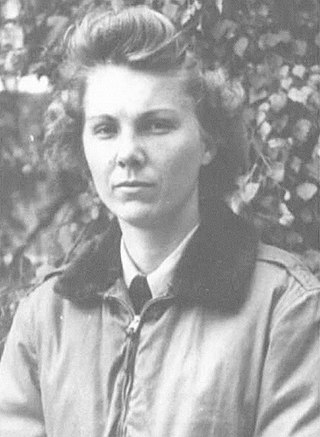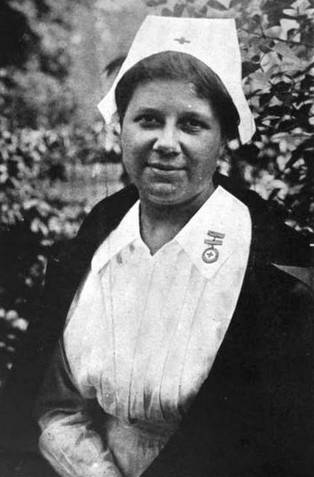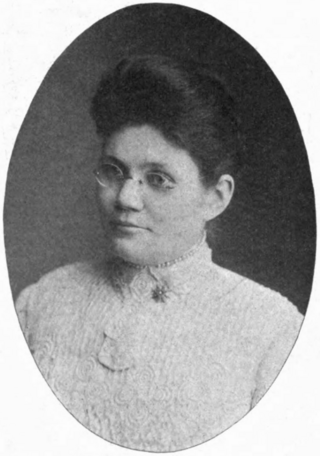
Rebecca G. Cameron (1885-1959), known as Reba G. Cameron, was a Canadian-born American Army nurse who was awarded the Army Distinguished Service Medal for her military hospital work during World War I. She also worked in the Philippines and Japan.

Rebecca G. Cameron (1885-1959), known as Reba G. Cameron, was a Canadian-born American Army nurse who was awarded the Army Distinguished Service Medal for her military hospital work during World War I. She also worked in the Philippines and Japan.
Reba G. Cameron was born in Canada. [1]
From 1911 Reba G. Cameron was Superintendent of Nurses and Occupational Director at Taunton State Hospital in Massachusetts, training her nurses in the new methods of occupational therapy. [2] [3] She also wrote about occupational therapy in nursing journals. [4] During World War I, she organized patients to knit and sew for a soldiers' relief charity. [5] She testified against legislation regarding the registration of nurses at hearings held by the Massachusetts State Committee on Public Health. [6]
Cameron held the rank of First Lieutenant in the United States Army Nurse Corps during World War I. She was Chief Nurse of the General Hospital at Plattsburgh, New York, and later at the Debarkation Hospital at Hampton, Virginia. [7] For her service and leadership during wartime, she was one of 24 nurses awarded the Army Distinguished Service Medal in 1923. [8]
Cameron moved to California after the war, and worked as an army nurse in San Francisco and in the Philippines. [9] [10] She went to Japan on a medical relief mission following the 1923 Great Kantō earthquake, [11] and was chief of the occupational department at the Letterman Army Hospital at the Presidio of San Francisco when she spoke to the California Society of Educational Therapy in 1926. [12]
Cameron was "retired for physical disability" from the Army Nurse Corps in 1933. [13] She lived in Redlands, California in her later years, and died in 1959, aged 74 years.

Mary Ann Bickerdyke, also known as Mother Bickerdyke, was a hospital administrator for Union soldiers during the American Civil War and a lifelong advocate for veterans. She was responsible for establishing 300 field hospitals during the war and served as a lawyer assisting veterans and their families with obtaining pensions after the war.

The United States Navy Nurse Corps was officially established by Congress in 1908; however, unofficially, women had been working as nurses aboard Navy ships and in Navy hospitals for nearly 100 years. The Corps was all-female until 1965.

The United States Army Nurse Corps (USANC) was formally established by the U.S. Congress in 1901. It is one of the six medical special branches of officers which – along with medical enlisted soldiers – comprise the Army Medical Department (AMEDD). The ANC is the nursing service for the U.S. Army and provides nursing staff in support of the Department of Defense medical plans. The ANC is composed entirely of Registered Nurses (RNs) but also includes Nurse Practitioners.

First Lieutenant Reba Zitella Whittle was a member of the United States Army Nurse Corps during World War II. She became the only American military female prisoner of war in the European Theater after her casualty evacuation aircraft was shot down in September 1944.

The history of nursing in the United States focuses on the professionalization of nursing since the Civil War.
Susan Edith Tracy was an American registered nurse who developed invalid occupations as a branch of nursing.:118 Tracy was a founder member of the National Society for the Promotion of Occupational Therapy. She was an educator and author, instigating the first training course about occupation and writing the first textbook about the therapeutic benefits of occupation.

Alma E. Foerster (1885–1967) was an American nurse who worked in both civilian and military care. She began her career as a public health nurse in Chicago and during the First World War helped establish hospitals in Kiev, for which she received the Cross of Saint Anna. She worked in Romania, receiving the Order of the Cross of Queen Marie for her service, before being sent on a humanitarian mission to Archangel, Russia. As one of only two American Red Cross nurses in Archangel, she provided assistance at the military surgical hospital, while the other nurse assisted with civilian nursing. She was one of the inaugural recipients of the Florence Nightingale Medal in 1920. After her return to the United States, she worked in the United States Public Health Service as a nurse, instructor and director of nursing in Chicago, Mobile, Ann Arbor and Racine, before returning to Chicago where she ended her career.

Maude C. Davison was a Canadian-born, American nurse. After a career in Canada, she moved to the United States. She served as the Chief Nurse of the United States Army Nurse Corps in the Philippines during World War II. She received numerous awards for her military service in both World War I and World War II. In 2001, she posthumously was granted a Distinguished Service Medal for her leadership of the Angels of Bataan, the first and largest group of American military women taken as Prisoners of War.

Hannah A. Kallem was a Norwegian-born American army nurse.

Dita Hopkins Kinney was the first superintendent of the United States Army Nurse Corps, serving from 1901 to 1909.

Sara Matilda Cox was an American nurse, born in Canada, one of the "Sacred Twenty", the first twenty women admitted to the United States Navy Nurse Corps. She was superintendent of nurses at the Naval Hospital in Washington, D.C. during World War I.

Minnie Goodnow was an American nurse, nursing educator, and historian of nursing. During World War I she was a member of the second Harvard Unit of nurses who sailed for France in late 1915.

Grace Mary Ellison was a British journalist. She wrote several books about Turkey. Though not herself a trained nurse, she was founder of the French Flag Nursing Corps during World War I.

Martha Montague Russell was an American nurse in World War I. She was one of the first six American nurses to receive the Florence Nightingale Medal when it was awarded by the International Committee of the Red Cross in 1920.

Katrina Hertzer was an American nurse during World War I, serving as Chief Nurse of the United States Navy Nurse Corps.

Fanny Titus Hazen served as an army nurse during the American Civil War. Later in life, she was president of the National Association of Army Nurses of the Civil War.

Dorothy Still Danner was an American Navy nurse in World War II, and, as a prisoner of war held by the Japanese from 1942 to 1945, one of the Twelve Anchors.

Elizabeth Wendell Hunter Ewing served as a nurse during the American Civil War, and later as president of the National Association of Army Nurses of the Civil War.

Beulah Ream Allen was an American nurse, physician, and civilian physician during World War II. After graduating with a nursing degree in 1922, she worked as a supervising nurse and headed the educational department for the LDS Hospital in Salt Lake City. She worked as a hospital inspector for the state of Utah until 1928, when she moved to San Francisco to attend medical school. While earning her degree at the University of California, San Francisco, she worked as a nurse in the Bay Area. Upon her graduation in 1932, she moved to the Philippines, where she opened a medical practice.

Cora Elm was an American nurse. She was a member of the Oneida Nation, and attended the Carlisle Indian Industrial School from 1906 to 1913. She served as a Red Cross nurse in France during World War I.